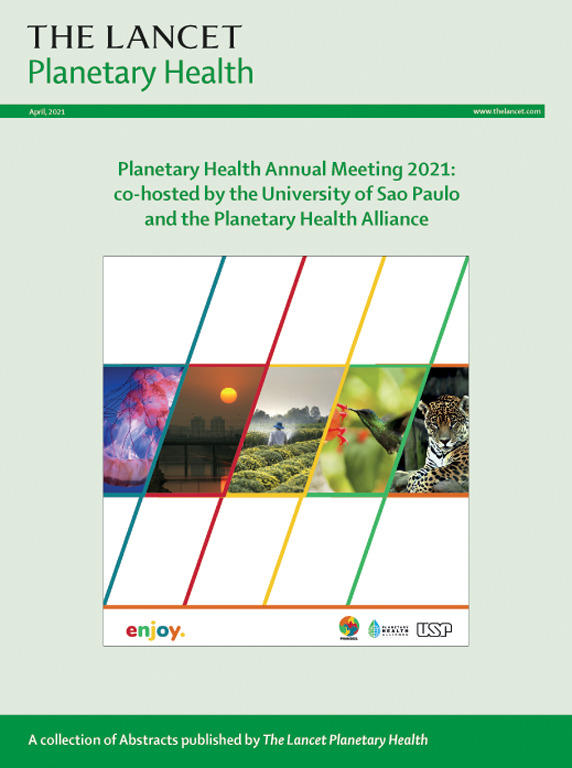非洲登革热病毒输入风险:模型研究。
IF 24.1
1区 医学
Q1 ENVIRONMENTAL SCIENCES
引用次数: 0
摘要
背景:登革热是一个重大的全球公共卫生问题,对非洲构成威胁。特别是,非洲国家面临着通过与经常发生登革热暴发的南美洲和亚洲地区的航空旅行联系而传播病毒的风险。有限的报告和诊断能力阻碍了对非洲全大陆传播动态的全面评估和监测战略的部署。在本研究中,我们旨在确定接收来自亚洲、拉丁美洲和其他登革热高发病率非洲国家的登革热患者的高风险非洲机场。方法:在这项建模研究中,航空旅行流量数据来自国际航空运输协会2019年的数据库。数据包括过去10年报告登革热疫情的14个非洲以外高发病率国家和18个非洲大陆国家向54个非洲国家每月的客运量,包括来源国和目的地国的所有197个商业机场。根据出发地到目的地的航空旅行流量和出发地的流行病活动,估计了登革热从亚洲、拉丁美洲和非洲境内高发病率国家传入非洲的风险。我们使用理论气候驱动传播适宜性和人口密度的复合指数,为当地登革热流行活动提供了一个新的代理,除了在风险流模型中使用旅行信息外,我们还使用该指数来估计输入风险。研究结果:据估计,东非国家从亚洲和其他东非国家输入登革热的风险很高,而西非国家从该区域内输入登革热的风险高于从非洲以外的国家输入登革热的风险。一些输入风险高的国家的当地传播适宜性较低,这可能会阻碍登革热输入导致当地传播和建立登革热疫情的风险。毛里求斯、乌干达、Côte科特迪瓦、塞内加尔和肯尼亚被确定为在持续传播适宜性期间易受登革热传入的国家。解释:我们的研究改善了以数据为导向的监测资源分配,特别是在登革热传入和传播风险较高的非洲地区,包括来自区域传播的地区。改善资源分配对于发现和管理输入病例至关重要,并可改善当地对登革热疫情的应对。资助:洛克菲勒基金会、国家卫生研究所、EDCTP3和地平线欧洲研究与创新、世界银行集团、医学研究基金会、威康信托基金、谷歌、牛津马丁学院流行病基因组学计划和约翰·费尔基金。本文章由计算机程序翻译,如有差异,请以英文原文为准。
Dengue virus importation risks in Africa: a modelling study
Background
Dengue is a significant global public health concern that poses a threat in Africa. Particularly, African countries are at risk of viral introductions through air travel connectivity with areas of South America and Asia in which explosive dengue outbreaks frequently occur. Limited reporting and diagnostic capacity hinder a comprehensive assessment of continent-wide transmission dynamics and deployment of surveillance strategies in Africa. In this study, we aimed to identify African airports at high risk of receiving passengers with dengue from Asia, Latin America, and other African countries with high dengue incidence.
Methods
For this modelling study, air travel flow data were obtained from the International Air Transport Association database for 2019. Data comprised monthly passenger volumes from 14 high-incidence countries outside of Africa and 18 countries within the African continent that reported dengue outbreaks in the past 10 years to 54 African countries, encompassing all 197 commercial airports in both the source and destination regions. The risk of dengue introduction into Africa from countries of high incidence in Asia, Latin America, and within Africa was estimated based on origin–destination air travel flows and epidemic activity at origin. We produced a novel proxy for local dengue epidemic activity using a composite index of theoretical climate-driven transmission suitability and population density, which we used, in addition to travel information in a risk flow model, to estimate importation risk.
Findings
Countries in eastern Africa had a high estimated risk of dengue importation from Asia and other east African countries, whereas for west African countries, the risk of importation was higher from within the region than from countries outside of Africa. Some countries with high risk of importation had low local transmission suitability, which is likely to hamper the risk that dengue importations would lead to local transmission and establishment of a dengue outbreak. Mauritius, Uganda, Côte d'Ivoire, Senegal, and Kenya were identified as countries susceptible to dengue introductions during periods of persistent transmission suitability.
Interpretation
Our study improves data-driven allocation of surveillance resources, in regions of Africa that are at high risk of dengue introduction and establishment, including from regional circulation. Improvements in resource allocation will be crucial in detecting and managing imported cases and could improve local responses to dengue outbreaks.
Funding
Rockefeller Foundation, National Institute of Health, EDCTP3 and Horizon Europe Research and Innovation, World Bank Group, Medical Research Foundation, Wellcome Trust, Google, Oxford Martin School Pandemic Genomics programme, and John Fell Fund.
求助全文
通过发布文献求助,成功后即可免费获取论文全文。
去求助
来源期刊

Lancet Planetary Health
Multiple-
CiteScore
28.40
自引率
2.30%
发文量
272
审稿时长
8 weeks
期刊介绍:
The Lancet Planetary Health is a gold Open Access journal dedicated to investigating and addressing the multifaceted determinants of healthy human civilizations and their impact on natural systems. Positioned as a key player in sustainable development, the journal covers a broad, interdisciplinary scope, encompassing areas such as poverty, nutrition, gender equity, water and sanitation, energy, economic growth, industrialization, inequality, urbanization, human consumption and production, climate change, ocean health, land use, peace, and justice.
With a commitment to publishing high-quality research, comment, and correspondence, it aims to be the leading journal for sustainable development in the face of unprecedented dangers and threats.
 求助内容:
求助内容: 应助结果提醒方式:
应助结果提醒方式:


